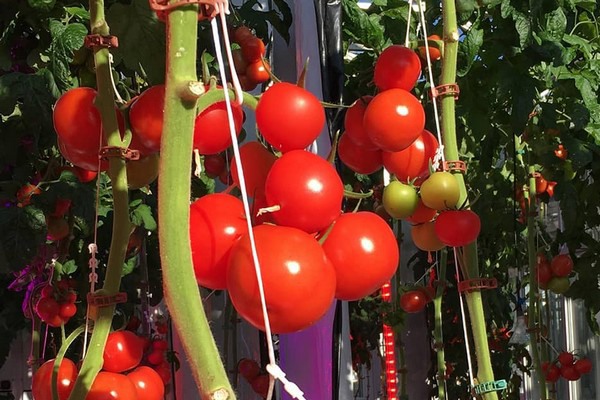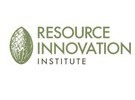Reducing energy usage and understanding your CO2 sourcing can increase profitability and reduce your operation's carbon footprint.
Carbon dioxide (CO2) is an essential building block to all plant life. Plants absorb CO2 from the ambient air, and through the photosynthetic process build plant cells that allow them to grow.
In indoor farming environments, especially vertical farms, ambient CO2 levels may not be enough to keep up with the intensity of inputs such as high-intensity lighting and tailored nutrient recipes. Even greenhouses in ideal sunny climates may find their crops not growing optimally.
That's why many growers turn to supplemental CO2 systems–by introducing additional carbon into the environment, growers can ensure that the energy and inputs that go into cultivating their crops are used effectively and not just wasted.
Adding CO2 to cultivation environments can not only help crops grow efficaciously, with the right balance of inputs, it also can help operations do so more efficiently.

CO2: Increasing efficacy and efficiency
CO2 supplementation is crucial when trying to maximize production by increasing growing inputs. Light, especially, drives plant growth rates: the more light you apply to a crop, the more it can grow (up to a certain point) as long as it has the requisite materials to build itself with (nutrients and CO2).
Dr. David Hawley, Principal Scientist at Fluence, an RII-member company that manufactures LED lighting systems for the CEA industry, compares plant production to running a manufacturing line.
"If you use lots of light to drive the machine hard, but there aren't any actual parts to assemble, you stress the machine," he explains. "It's like having an assembly line of people on a manufacturing line and you keep yelling, "work harder!" but there's nothing they can actually do because they haven't got any parts to work with."
Similarly, "If you supplement a bunch of CO2 without using higher light, you'll simply have more parts around, waiting to be assembled into plant material." In other words, simply increasing CO2 without a corresponding adjustment to light, water, temperature, humidity, and nutrients will yield some increase in crop production, but is best capitalized on when higher light levels are used and other environment parameters are managed accordingly.
Each CEA operation will have different production targets, and each crop will have different production requirements. By trialing (at a small scale) different ratios of CO2, lighting intensities and spectra, watering, environmental conditions, and nutrient feedings, growers can find the delta at which CO2 supplementation is optimized to the point where other higher energy inputs can be lowered.
For example, a vertical farm growing lettuce may find they can reduce lighting intensities to 250 μmol·m–2·s-1 and CO2at 1,000 parts per million (ppm) to achieve a similar yield as having lights set to 300 μmol·m–2·s-1 with 800 ppm of CO2. (These figures are only given as examples.)
Going back to the assembly line analogy, Hawley explains that CO2 and nutrients are components to be assembled, light is the manager driving production speed, and plants are the assembly workers (in this case they are assembling themselves). "If you are in a factory and all of the components you need to assemble are close at hand, you're going to work more efficiently," he says.
By turning the light intensity up, "maybe you get the person to run a little faster from spot to spot, and maybe you get the analogous conveyor belt to move a little faster. But ultimately, you can probably achieve the same net photosynthetic rate by putting a little less pressure on the machine with light intensity and instead just upping the CO2. In other words, making components more readily available."
When injecting supplemental CO2 into a room, it's important to remember that CO2 is heavier than air. If you're limited on air circulation, Hawley advises growers to inject it from above the production space "and let it fall down instead of injecting it below [where it can] just sit in the bottom."
"We see people doing vertical air handling situations in vertical racks. And they have these air socks blowing air everywhere. If your CO2 is integrated into that, or a comparable system with good air mixing, then uniformity is not going to be an issue," Hawley continues.
Target CO2 concentrations depend on the specific crop and/or cultivar, as well as the number of plants in the production space. Greenhouses can also require slightly higher CO2 concentrations than an indoor farm of the same size due to the latter being more sealed.
"[Indoor farms] tend to be much more sealed, whereas commercial greenhouses tend to be pretty leaky. Based on your infrastructure, as a grower, you would want to make a decision about how strict you want to be about your CO2 thresholds," Hawley says.
Sourcing CO2
As CEA operations increasingly weigh their practices' impact on their carbon emissions, accounting for supplemental CO2 will become common practice. While the CO2 injected into the grow room will mostly be neutral due to it turning into plant biomass, how that CO2 is sourced can increase an operation's carbon footprint.
"People don't really know where their CO2 is coming from," notes Camille Hanna, Business Development Director at Skytree, a Direct Air Capture machine builder based in the Netherlands and RII member organization. "You're getting it in canisters, but where is it coming from?… Is it coming from an ammonia plant? How far is it being driven to you? People generally don't have that visibility."
CO2 shipped in canisters is often the result of point source capture. "Large emitters – oil refineries or fertilizer factories that give off CO2 in their manufacturing processes–have a process by which they can capture that CO2," Hanna explains. "They purify it, liquefy it, and that CO2 is usually put in canisters or in a large tank then it's transported to where these farms are located."
While that method helps reduce the CO2 released into the atmosphere from the manufacturing facility, "it does require energy to purify the CO2 that's coming out of these manufacturing processes," Hanna continues, adding that transportation also adds to the overall carbon footprint. "In that process, you often end up amplifying the emissions that wouldn't have been amplified if it were just going into the air."
Other facilities, especially greenhouses, may be able to source CO2 onsite from combined heat and power (CHP) units that burn natural gas or other fossil fuels. Recirculating that CO2 can greatly increase the CHP system's efficiency, as well as the facility's overall carbon footprint. This strategy has been implemented by greenhouse operators around the globe, including in California, Belgium, Canada, The Netherlands, and Great Britain.
A second way of generating CO2 onsite is through a newer technology called direct air capture (DAC). These systems extract CO2 from the ambient air for storage, or for use in various manufacturing processes (including agriculture). These systems are newer solutions to carbon capture and the carbon footprint of a machine can be offset by utilizing renewable energy sources.
As the cost of CO2 continues to rise and CO2 supplies begin to decrease due to global policy changes focused on curbing emissions, the price to acquire CO2 for controlled environment agriculture is likely to increase, potentially reaching a point where these systems make both ecological and economic sense for tight-margined CEA producers.
"Companies like Shell, who are major suppliers to the main CO2 pipeline in the Netherlands, are starting to divert their supply to be stored under the North Sea," Hanna notes. As more and more CO2 is diverted to underground and underwater storage, impacting the supply of CO2 available for use in other industries, the price of purchasing CO2 will become increasingly variable for CEA producers. In turn, production costs will become less predictable–something that CEA producers try to avoid. "The landscape is definitely changing."
As indoor farming and the broader CEA industry faces increasing costs and tighter regulations surrounding carbon emissions, investing in applying strategies that reduce growers' carbon footprint will not only benefit the environment but also ensure long-term economic viability. By staying informed and adaptable, CEA producers can continue to thrive in a changing landscape, achieving both high productivity and sustainability.
For more information:
Resource Innovation Center
www.resourceinnovation.org
